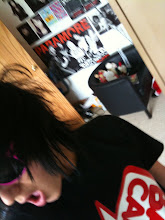NARRATIVE THEORY
Narrative: The way in which a story is told in both fictional and non-fictional media texts.
Vladimir Propp
• Russian critic and literary theorist
• Analysed over 100 russian fairytales in the 1920’s
• He proposed that it was possible to classify the characters and their actions into clearly defined roles and functions.
• Films such as Star Wars fit Propp’s model precisely, but as a significant number of more recent films such as Pulp Fiction do not.
• The model is useful, however it highlights the similarities between seemingly quite different stories.
Propp’s Character Roles:
• The hero (seeks something)
• The Villain (opposes the hero)
• The donor (helps the hero by providing a magic object)
• The dispatcher (sends the hero on his way)
• The false hero (falsely assuming the role of hero)
• The helper (gives support to the hero)
• The princess (the reward for the hero, but also needs protection from the villain)
• Her Father
Tzvertan Todorov
• Bulgarian literary theorist
• Suggests most narratives start with a state of equilibrium in which life is ‘normal’ and protagonist is happy
• This state of normality is disrupted by an outside force, which has to be fought against in order to return to a state of equilibrium.
• This model can easily be applied to a wide range of films.
Equilibrium
Equilibrium- Hairy Sheep
Disequilibrium- Non-Hairy Sheep
New Equilibiruim- Learning to live with it and bouncing
29/9/09
Hero-The Sheep-seeks happiness
Villain-Sheep sheerer/ van
Doner-Jackalope provides bounce
Dispatcher-Jackalope
Helper-Jackalope
The Princess- His happiness, and new found respect
Audience
Who is the target audience?
BU-Men, middle aged uni-sex
BJ-Women, all ages
How does it make the audience feel?
BU-Anxious, alert
BJ-Similarities, its a feel good film
The use of mise en scene and sound?
BU-Non-diagetic sound, dark mysterious, quick camera shots, feels part of the action
BJ-Dark lighting, winter, warm, snuggly, christmas songs, jolly music, sad, lonely, music depicts how the character feels. retro, food, buffet, communications. costume re-enforces what is said in the dialogue and for comedy value.
Who makes the meaning behind the text?
BU-The movie people, ourselves
BJ-Assumptions, lonely, desperate, partly ourselves
Does a media text influence your mood/behavior?
BU-Yes, it makes you feel alert, confusion (fast paced) enigma code (whats going on?)
BJ-Yes, we feel compassionate , feel good
What is the niche audience?
BU-MIddle aged, action hungry men, mass audience
BJ-Middle aged women, possibly single
The meaning behind the text comes from someone creating a meaning but our own assumptions can develop and change this depending on our background lifestyle.
Formal features makes the genre, the genre determines the audience.
Uses and Gratification (60’s and 70’s)
Why do we watch/use/read a media text?
The media is used by an audience to satisfy certain basic psychological needs.
Information ( people want info that makes them happy)
Personal identity (people used media text to influence or back up there identity)
Social interaction (entertainment with your friends)
Problems:
Reductive (reducing a viewer down to there set of needs)
The audience are the one with the power
Manipulated
Interpretations
Someone came along and said its more compliacted than that. 3 different ways of reading a text
• Dominant or preferred readings-closest to those intended by producers of the text
• Life experiences/ideas are similar to those in the text
• Impossible to apply an exact preferred reading.
Negotiated Reading
• mentally negotiations needed to overcome a disagreement in a media text
• E.g a woman watching male hero
Oppositional Readings
Own view is at odds within the media text



0 comments:
Post a Comment